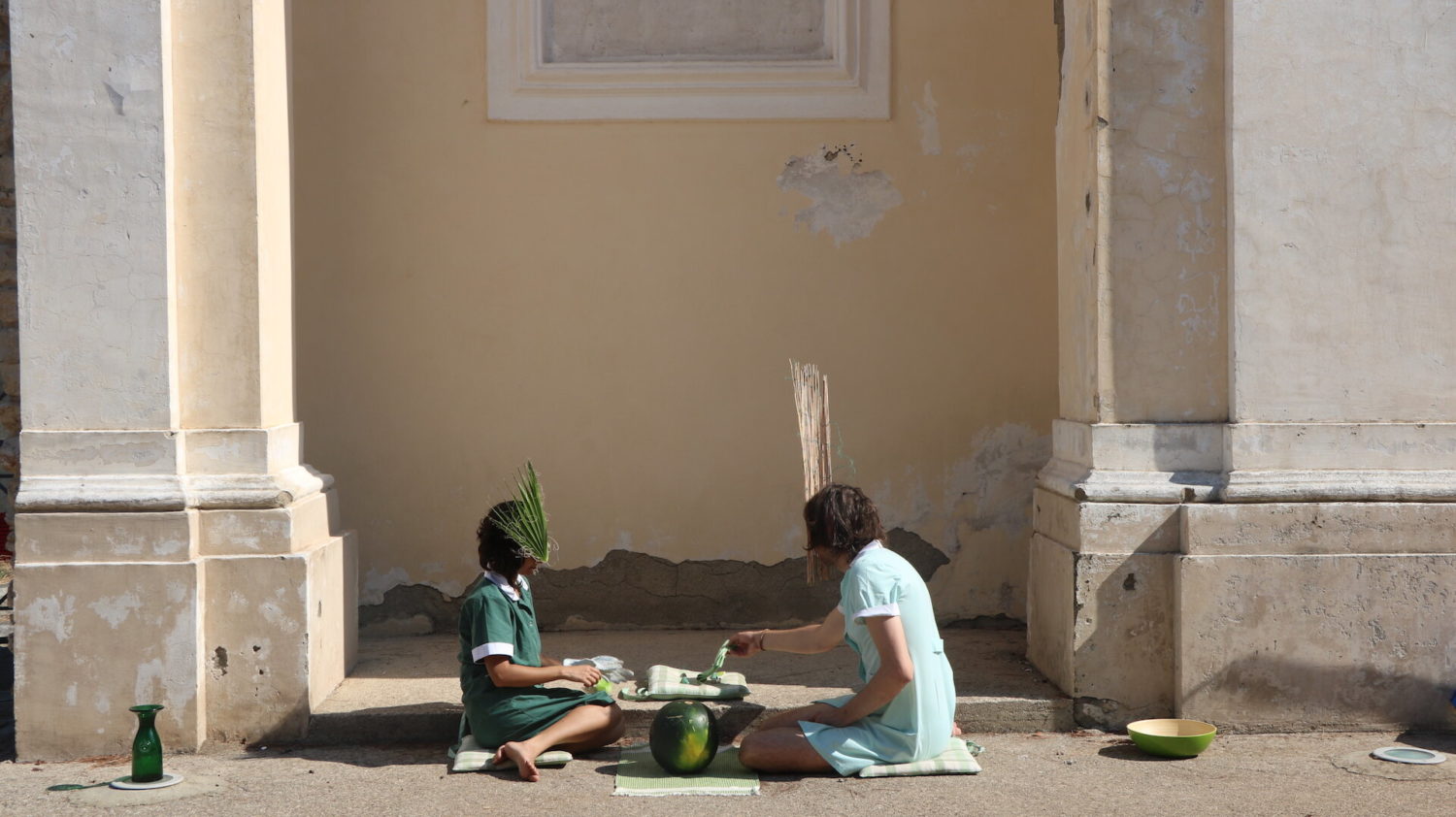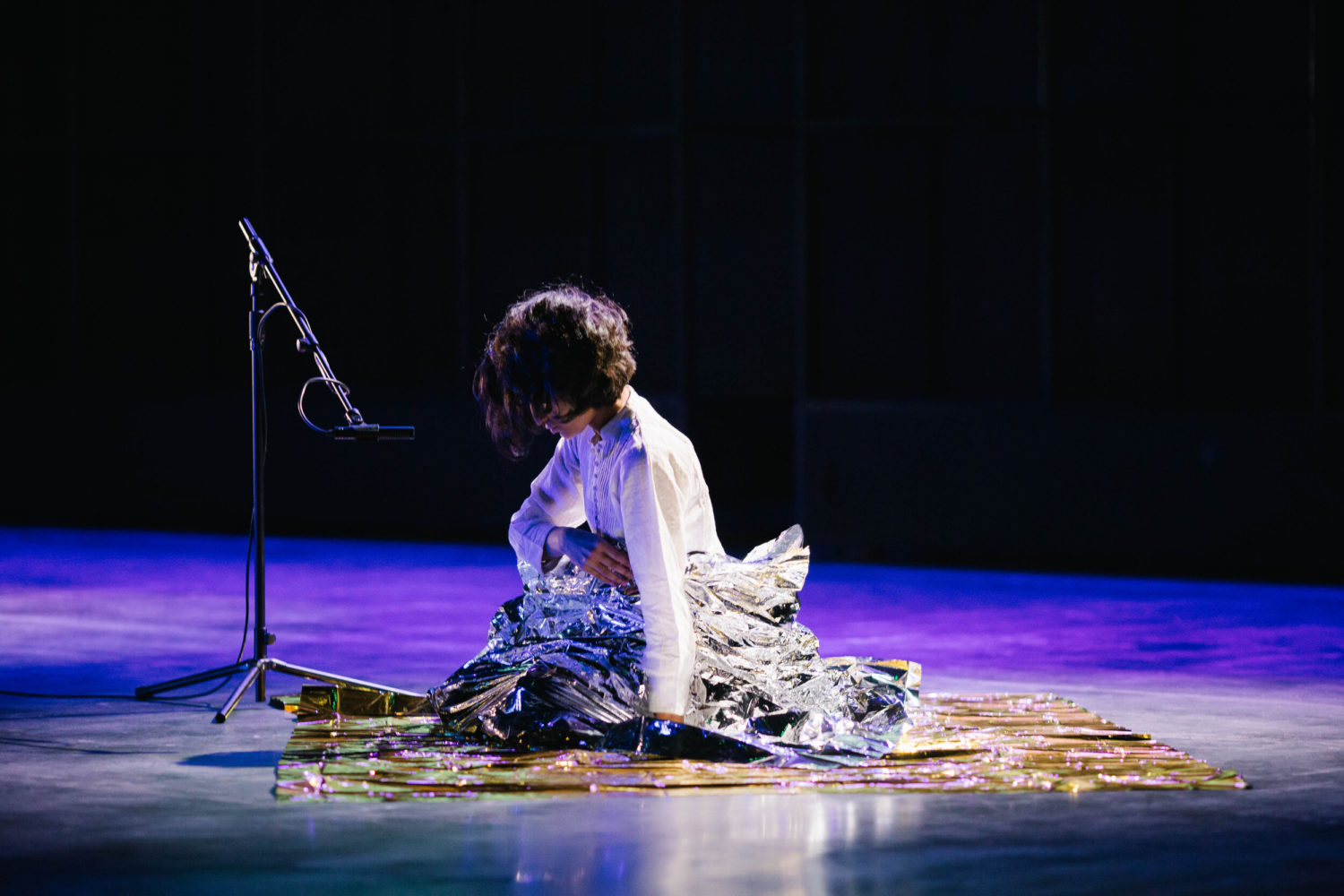Interview: Artist Himali Singh Soin On Almanacs, South Asian Futurism & The Power Of The Word
By Something CuratedBased between Dehli and London, Himali Singh Soin’s complex practice embraces numerous outputs, from poetry and writing to film and performance. Her multidisciplinary works employ metaphors from outer space and the natural environment to construct imaginary cosmologies of interference, alienation and intimacy. Inspired by her own journey to the Arctic Circle, last year Singh Soin received the esteemed Frieze Artist Award for her on-going work, we are opposite like that (2017-2022), which interrogates the politics of ecology and language. The artist has since exhibited and performed across the world, with presentations of her work at Block Universe, Migros Museum fur Gegenwartskunst, and Dhaka Art Summit, among other sites. More recently, she has been the Whitechapel Gallery’s writer in residence. To learn more about her fascinating life and work, Something Curated spoke with Singh Soin.
Something Curated: Can you give us some insight into your background; how did you enter this field?
Himali Singh Soin: My father is a mountaineer and my parents together lead expeditions to remote and sensitive parts of the planet. My first trek with them was when I was 3, in Sikkim, an endangered territory in India. The curator Diana Campbell Betancourt recently quipped about my expeditionary practice as opposed to my exhibitionary practice: I love that. My field is the actual field, my belief in the entanglement of ecological networks and folk mythologies isn’t so much learned but embodied. I have also lived a large part of my life in the Himalayas, and I feel deeply connected to land and the sense of immense time and trickling loss that it carries with it over the ages. I had these stacks of diaries from my journeys, note-taking, mark-making, a compilation of measurements, odd observations, lost ruminations, secret communications with a spirit guide.
It’s only now that I’ve recently published my book, we are opposite like that, that I realize what I was making were almanacs. It’s a collection of mythologies from the polar circles: missing paraphernalia from archives, false philosophies, made-up maps, theories, recipes and small resistances. Almanacs are not bound to narrative, they can be messy, coded in metaphor, make divergences and digressions, they allow space that is not simply in the margins for a reader to exercise their own freedom and interpret between the lines. This method of tucking the real thing in becomes increasingly important in present-day India where freedoms of expression are deeply threatened.

I went to hippie international school in rural India where having conversations was privileged over the classroom, and then studied literature and theatre in Vermont and later art writing at Goldsmiths in London. In between were experiments, inquiries, failures, discoveries, a lot of runaway poems, certainties that proved completely dubious. At the heart of my practice is the word, and the naive insistence that words can do more, they can make us futures in which we are not opposites but extensions, additions, alloys, alchemical integrations, disjointed unifications. They insist on the magnetism between the mystery of ourselves to ourselves and marvelling at those different to us, as creatures that practice different models of being together.
SC: Your practice traverses several mediums from poetry and writing to film and performance — could you expand on the threads that tether these diverse outputs?
HSS: The word is my favourite, but it’s not enough for me on paper. Or at least the paper should be really interesting. So performance has always been a way to relay language with voice and body, to set it in space and in motion. This also means being able to work as a company, which is what I loved about the theatre. Collaboration as a polyphonous resounding of a way to form those kinships we admire so much in the natural world.
Video was always in service of poetry, but I have recently really begun to enjoy treating images in the spaces where poetry says, we cannot do all the work. If we listen to the medium, it tells us what it wants, what it can give and how we might communicate with the spirits beyond.
SC: Gaining new perspectives from outer space is an idea that often comes up in your work; what interests you in learning from the expanse beyond Earth?
HSS: While working with the incredible poet, Tracy K. Smith, I understood, in a deeply subliminal way, how to talk about the big things, love, death, the moon, at an atomic scale. How the spiral of a snail’s shell here is churned and formed by the ocean, whose tides are governed by the moon, reflecting the spiral of the galaxy there. One of my favourite poems of hers is called, “The Universe is a House Party”.
So outer space for me is a place of infinite mystery, one that might hold up a mirror for us to reflect on aliens and alienation, distance, desire and intimacies, the delays of light might help us consider how our ancestors’ pasts might manifest in uncanny ways through the span of our lives, black holes might be a way of thinking about the event horizon of knowledge and memory. Plus, it’s the old comfort that if we can find stillness on a crazy ball spinning in infinity, then turbulence is part of our being, and the revolution is always underway. Chipping at the injustices of this world is geological work, not a mere blip in time.
SC: Can you tell us about your on-going series of interdisciplinary works, we are opposite like that?
HSS: we are opposite like that began with residencies in the Antarctic peninsula and the Arctic Circle in Svalbard in 2017. It began with this idea that ice is an amazing archive, a storer of stories from a time far before the human. Now, as humans intervene with the natural cycles of the planet, this wise storyteller will melt, and with it, all its information, its language will be lost. So I wanted to tell these stories from the perspective of ice, and use speculative fiction and poetry as a way to enter into histories unknown, forgotten or silenced.
But these were big places, as big as outer space, and it took me four years to sift through my research and ideas. En route, I wrote a story here, a poem there, then two short films came out of my performances of an alien in an extraterrestrial landscape, now we’re touring the films by live-scoring them with a sarod, a string quartet and poetry. I also think of the book as a manual for future performances so that every iteration can be different as it speaks to the current moment. Suddenly, Antarctica is being used to study humans in isolation in the context of the pandemic. In the way that my alien character moves around in the film in an extraterrestrial landscape, a palette to build upon ideas of South Asian futurism, out of sync with the landscape’s whiteness, and finds friendship in the imagined heat and blackness of a coal mine, we must find a language of living with and not defeating the many microbes of our lives. I’ve made editions on bamboo paper that I want to print digitally and embroider on fabric, I’ve made experimental audio chapters of the book while its printing was paused for TBA21 (to be launched in September) and a text score, Boatness, which will show at Gropius Bau this month in Berlin. It seems to me that like land, which is not fixed but constantly shifting, and the oceans, swirling gyres and ideas across the world, this body of works will also continue to absorb, imbibe and energize till it evaporates or melts completely.
This page should help understand the expanse of this work.

SC: What are you currently working on and how has the pandemic affected the way you operate?
HSS: The pandemic clipped our wings. It sat us back down and asked us to rest and reflect. The reality of that is that performances got cancelled, institutions ran out of funds, audiences disappeared. Things are more DIY than ever! But I’m still trying to imagine ways of cross-continental collaboration, so that we can spread the love. Rather than fighting the virus, what if we asked it what it wants, like a guest and not a parasite? A vaccine after all is a tiny bit of an antibody inside you. The self is made up of a multitude of others, resistance takes the form of acceptance, an anti-body. Where does the real contamination lie and is the pandemic not a contagion of hate, intolerance and inequality? It is togetherness that is infectious, friendship that is transmissible and belonging a symptom of feverish love. The pandemic has really made a space for listening, where the usual noise of our lives has quieted. I’m lucky that my foremost collaborator is my life partner too, jazz drummer David Soin Tappeser, so music has played an important role in the new homemade work.
Where do you go after working on the poles but the moon, right? I started to think about what my third pole was. And the answer was in the phrase itself: the Himalayas are referred to as the Third Pole of the world! I’m named after these mountains, my name means daughter of the snow. And this is where I found myself during the lockdown, working on two new works, one about a wild conspiracy surrounding a nuclear mountain and its variety of leakages and another examining the many animistic deities, mysticism and healing rituals of the Himalayas, begun in the form of dispatches as the Whitechapel Writer in residence, and one that will morph into a filmic, performative, trance experience.
SC: What are your favourite art spaces in India?
HSS: Khoj is an experimental arts lab that was initially artist-run and continues to invite cutting-edge practices into its beautiful haven in a chaotic part of Delhi. I also love Sunaparanta, a non-profit art centre in a converted Portugese villa in Goa. I love the atmosphere of the Cochin biennale, set on the docks of the beginning of the spice trade and a complex history of colonial conquest. I have recently begun working with Project88, a Bombay-based gallery housed in a former printing press with a roster of artists whom I deeply admire.
SC: And what do you want to learn more about?
HSS: Dreams.
Interview by Keshav Anand / Feature image: Himali Singh Soin, we are opposite like that (2017-2022) — Images & videos courtesy Himali Singh Soin